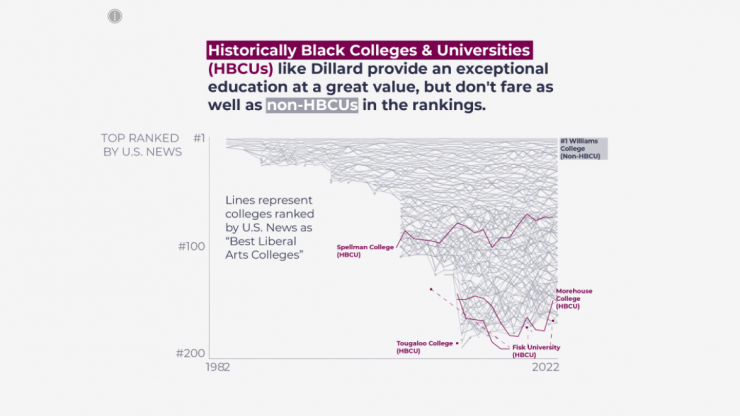Emilie Schaffer
Statement
This data journalism story calls into question the popular U.S. News & World Report Best Colleges ranking system.
The U.S. News rankings are relied upon by millions of applicants and their parents as they decide where to apply to and attend college (Chartier & Peachey, 2014). I interviewed Huaying Qiu, an international student who chose to attend Reed College because it was well-ranked by U.S. News. Huaying completed a statistical analysis showing that Reed was under-ranked by U.S. News and that complicated statistical modeling was required to recreate the rankings that U.S. News presents as a simple weight-and-sum model (Qiu & Du, 2021).
Using data reported by U.S. News and the government-sponsored Integrated Postsecondary Education Data System (IPEDS), this story visually displays the gaps and suspicious trends in the U.S. News Best College rankings, seeking to educate parents and students who believe the rankings measure quality while providing alternative data sources and ranking systems for considerations.
All ranking systems are inherently biased; they must incorporate judgment about what matters, and what matters most. As users, we need to decide whether we agree with those judgment calls and should consider holding organizations, like U.S. News, accountable for providing transparency behind their data. This story seeks to educate the users of U.S. News’ rankings so they can more easily determine whether they agree with U.S. News’ judgments.



